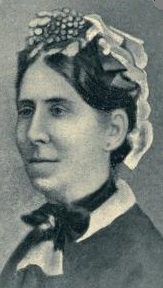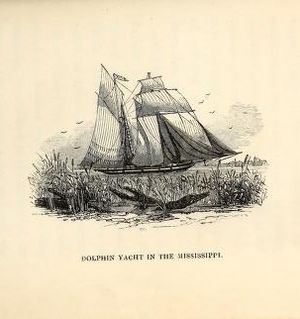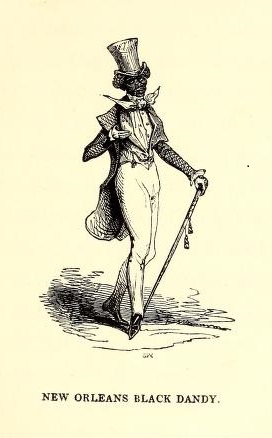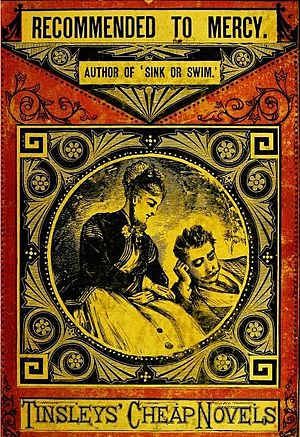Matilda Charlotte Houstoun facts for kids
Quick facts for kids
Matilda Charlotte Houstoun
|
|
|---|---|
 |
|
| Born | 16 August 1811 Staffordshire, England, United Kingdom |
| Died | 1 June 1892 (aged 80) Pimlico, London, England |
| Occupation |
|
| Literary movement | Women's 19th century literature, Sentimental Fiction, Novel of Experience |
| Notable works | Texas and the Gulf of Mexico; or Yachting in the New World, Hesperos or Travels in the West, Recommended to Mercy, Only a woman's life; by one who saved it |
Matilda Charlotte Houstoun (born Jesse; August 16, 1811 – June 1892) was a British writer and activist. She wrote about her travels, wrote novels, and fought for women's rights. She is famous for her travel books, especially Texas and the Gulf of Mexico (1844) and Hesperos. These books shared her thoughts on African-American life in the southern United States during the 1800s. Later in her life, she focused on helping working-class women and single mothers. One of her most well-known novels was Recommended to Mercy, published in 1862.
Contents
Early Life and Family

Matilda Charlotte Jesse was born on August 16, 1811. She was baptized into the Church of England in West Bromwich, England.
Her father, Edward Jesse, was a writer who studied nature. His family were Huguenots, French Protestants who moved to England. Edward was friends with many important writers and politicians of his time. He also worked for the government, helping to restore places like Hampton Court Palace.
Matilda's mother, Matilda Morris, was the daughter of Sir John Morris, 1st Baronet.
Matilda had a brother, John Heneage Jesse, who became a historian. She also had a sister. Her family lived near royal parks in London, like Richmond Park and Bushy Park. Her father knew the Duke of Clarence, who later became King William IV of the United Kingdom. The Duke would often join Matilda and her father on their rides.
Matilda had a basic education. Her governess didn't let her read novels. However, Matilda helped her father with his writing. This allowed her to meet many artists and writers. She started writing her own short stories and poems.
During her childhood, there was a big debate about ending slavery in the British Empire. Her aunt taught her about this important cause. Matilda even met William Wilberforce, a famous anti-slavery leader. She remembered being annoyed because, after his visit, her family stopped eating cakes and puddings made with sugar from the West Indies. They believed eating it was wrong because it came from slave labor.
Adult Life and Travels
Matilda's first husband was Reverend Lionel Fraser. They married around 1831, but he died the next year. She then lived with her parents for four years.
On October 1, 1839, she married Captain William Houstoun in Paris. His father was General Sir William Houston, 1st Baronet.
Matilda and William had two sons, William (born 1838) and George (born 1841), and one daughter, Sidney (born 1843).
From 1842 to 1844, she traveled with her husband to New Orleans and Texas. These trips inspired her first travel books. They also traveled through Paris and Naples. In the 1850s, they returned to Texas. Later, her family moved to Ireland when her husband bought land there. She began her career as a novelist in Ireland, publishing her first novel in 1862. In her later years, she moved back to London. She became very interested in women's rights, especially for single mothers and working-class women.
Journeys to North America
In September 1842, Matilda and her husband, Captain William Houstoun, left England. They sailed on their yacht, the Dolphin, which had six cannons. They arrived in Galveston, United States, on December 18. They then traveled to New Orleans between December 1842 and January 1843. They sailed around the Gulf of Mexico, visiting Texas and New Orleans.
During one trip from New Orleans to Galveston, she rode a steamboat called the Dayton to Houston, Texas. She spent three days traveling along the Buffalo Bayou. In 1844, she published her first travel book, Texas or the Gulf of Mexico; Yachting to the New World. This trip was partly for her husband's business, as he was involved in making and preserving beef.
In her 1850 book, Hesperos, she wrote about another trip to Texas. At that time, Texas was becoming part of the United States. On this second trip, she visited James Morgan, a Texas landowner. She also met Ferdinand von Roemer. They did not get along well. Roemer thought she was a "snob," and she described him in a negative way. Captain Houstoun seemed to have gone on this trip to invest in sugar farms in Texas. However, Matilda mainly observed life there as a tourist.
Viktor Bracht noted in 1848 that Matilda's 1844 book was one of the few accounts of Texas written by a woman. He also mentioned the works of Mary Austin Holley. In Yachting to the New World, Houstoun wrote about politics and even discussed the possibility of a civil war in the United States.
Views on Slavery
In the British Empire, the slave trade was considered abolished in 1772. However, slavery itself was not fully illegal until 1840. This was a long process involving people like William Wilberforce, whom Matilda knew about.
Matilda went to America with her aunt. She wrote about her strong feelings against slavery: "There is scarcely any sight more sad than a human being being bought and sold. I went to America strongly against this unnatural trade. I was ready to see every example of it with horror, and every enslaved person with pity."
She first thought of the black population in New Orleans as helpless. But as she wrote her 1844 book, she began to see them as active people in their own lives: "When we drove through the streets, especially on Sundays, the display of fine clothes and good taste among Black people was very remarkable... No one pays more for their clothes than the Black person in the Slave States. They also give their money so carelessly, and with such an independent air. I have heard of them paying eight dollars for a suit of clothes. Their hard work and efforts to get money are very praiseworthy. They often give their masters a certain amount of money (usually about two dollars a day) instead of their services. Their time is then their own, and they can earn as much more as they can... though I still saw the slave trade in the same way, I began to think that enslaved people were not quite as much to be pitied as I had imagined."
In her 1850 book, Hesperos, Houstoun discussed many topics. These included Christianity among African-Americans and the settlements in Liberia. She also compared the populations of "whites" and "blacks" in the Americas. She wrote about how slavery affected wealth in the northern states and black labor in the West Indies. She also touched on England's role in the cotton trade and ending the slave trade.
Her views were shaped by the ideas of her time. She believed that the "bondage of the black race in America" might be a way for "heathen Africa" to become "civilized" through Christian missionaries.
Life in Ireland
Matilda's second husband leased land in northwestern Ireland. He died on October 23, 1872, in Dhulough Lodge, Ireland. She published her 1879 book based on her life there. She wrote many of her early works at Doolough. She often wrote to cope with her "weariness" when William Houstoun was away on duty, and later as a widow. Her novels from this time were often "sensation fiction," meaning they were exciting and dramatic.
She became very interested in gardening while living in Connacht. She transformed the Lodge from a "bog" into "dainty and well kept gardens." She felt she was born to be a landscape gardener. She planted many trees and flowers that grew very tall. She also built a greenhouse where she loved to grow exotic ferns. She spent all the money she earned from her writing on her plants.
Her Writings
Matilda Houstoun's first published work was Katerina, which appeared in a London magazine called Bentley's Miscellany in 1839.
Travel Books
Houstoun published her travel books Texas and the Gulf of Mexico; Yachting in the New World in 1844 and Hesperos or Travels in the New World in 1850.
Novels
Her novel Recommended to Mercy (1862) was one of her first fiction works. Many of her novels featured female main characters who faced dangerous situations. These stories explored women who were considered "fallen" by society. Houstoun's heroines were often strong and took action. These books are sometimes called "sentimental" fiction. In the 1800s, some male authors criticized such novels written by women.
By 1868, she was known as an important novelist and writer. Her later works (1879–1892) are said to question the idea of marriage. This was before the "New Woman" style of writing became popular in Britain.
| Sentimental Novel | Publication |
| Such Things Are | 1862 |
| Taken upon Trust | 1863 |
| Cyril Blount: or, Trust Money | 1865 |
| The Two Rubies | 1868 |
| Wide of the Mark | 1871 |
| Gone Like a Shadow | 1871 |
| Lilian's Penance | 1872 |
| Barbara's warning | 1874 |
| Done in the dark | 1877 |
| Records of a Stormy Life | 1879 |
| Lost in the Crowd | 1882 |
| A cruel wrong | 1890 |
Recommended to Mercy
Recommended to Mercy was almost banned by a major publisher when it first came out. However, after its success and good reviews in newspapers like The Times, it was picked up by another publisher.
The main character of Mercy is Helen Langton. She chooses to be with the man she loves, Philip Thornleigh, even though they are not married. This was very unusual for the time. Helen believes that unhappy marriages are wrong. She chooses her own happiness over what society expects. Houstoun also showed Helen finding happiness in her work, even as a mother.
Houstoun suggested that women themselves sometimes helped keep these strict social rules in place. For example, a character named Mrs. Wraxham tries to make Helen an outcast for her own gain. Helen is shown as kind and helpful to other women. This promotes the idea that women should support each other.
The book tries to make the reader feel empathy for Helen. It makes the reader question the rules that prevent Helen from being accepted by society. The novel ends with Helen as a middle-aged woman who has accepted her life. This ending was seen as a step towards the "New Woman" style of writing.
Zoe's Brand
Zoe's Brand is a fantasy novel that lets readers escape into another world. The main character, Zoe Gordon, is the daughter of a plantation owner in Louisiana. She has many charming male admirers. The male characters are mostly seen through Zoe's eyes and act like gentlemen.
The story is set in the American South before the Civil War. Zoe's Brand was written based on Houstoun's time in Texas in 1843. It has strong anti-slavery themes and religious ideas, similar to Mercy.
Gone Like a Shadow
The heroine of Gone Like a Shadow is Madeline Ward. After her father dies, Madeline leaves her home. She takes on a new name, Ada Wynward, and becomes a governess (a private teacher) for a family in London. When her mother gets sick, Madeline becomes a governess for another family. This new family treats her well. However, Madeline feels like an impostor and worries about her future. To help her mother, she steals a small chain. This incident makes her more withdrawn. Nine months later, Madeline marries Baronet Deane. He eventually finds out about her past through gossip. Madeline loses her good reputation in society. On her cousin's advice, Madeline flees to London. She tries to prove her innocence to separate from her husband and regain her standing. However, the Baronet rejects her. Madeline, now a mother, is considered a "fallen woman." Houstoun ends the novel with Madeline, though "gone like a shadow" from society, planning to return.
Women's Rights
In her later life, Houstoun became a strong supporter of women's rights. Her books like Only a woman's life; by one who saved it (1889) and His Besetting Sin (1888) show her interest in these issues.
Biographies
Her 1879 book, Records of a Stormy Life, and her 1883 book, A Woman's memories of World-Known men, are partly about her own life. Sylvanus Redivivus (1889) is another one of her biographies.
Activism
In her later years, Houstoun became more involved in helping women. A notable case she worked on was that of Frances Isabella Stallard (1856–1922). Houstoun believed Stallard was innocent of murdering her child.
Frances, a teenager, became pregnant by a man who then left for the West Indies. She gave birth to her daughter, Agnes Ellen, as a poor single mother. Agnes was placed with a caregiver. Later, a policeman reported that Agnes was being abused. Frances and her mother walked 20 miles to bring Agnes home. They noticed that Agnes, at two years old, could not stand or walk and often bled.
Frances later took Agnes, saying she was going to place her with the father's family. Frances did not return for four weeks. Agnes's body was later found. In court, Frances confessed to causing Agnes's death by covering her face to stop her crying. Frances was sentenced to death.
After her story was published in newspapers, there was a public outcry. Many people signed a petition asking for mercy. The charge was changed to "penal servitude for life," meaning she would spend her life in prison. She served twelve years.
Houstoun learned about Stallard's case around 1888. She published her book Only a Woman's Life in 1889 to support Stallard's defense. That same year, a judge read Houstoun's book. After further discussion, Stallard's guilty verdict was dropped. She was released on July 25, 1889. Houstoun later said she was thankful for her book, as it helped get Stallard released after twelve years.
In her final years, Houstoun was known for hosting small gatherings for elderly men and women. She helped those who had faced difficult situations.
Final Years
Matilda Houstoun had a collection of art, including works by famous painters. She described herself as a "Liberal" in politics. She was featured in Helen Black's book Notable Women Authors of the Day (1893). Black noted that Houstoun was a great reader of both old and new literature. She enjoyed the works of Caroline Norton and Charlotte Riddell.
Houstoun suffered from severe pain in her joints and knee injuries, likely from her many years of gardening. She died from a brain hemorrhage at her home in London at the age of 81.
Published Works
- Katerina : the dwarf of the Jungfernsteig in Bentley's Miscellany Vol. 6 No. 36 (1839) Katerina
- Texas and the Gulf of Mexico; or Yachting in the New World (1844) Vol I Vol II
- Hesperos, or Travels in the West (1850) - Vol I & II
- Such Things Are (1862) Vol I Vol IIVol III
- Recommended to Mercy: A Novel (1862) Vol I Vol II Vol III
- Hazel Combe: or, The Golden Rule (1863) Vol I Vol IIVol III
- Taken upon Trust (1863) Taken Upon Trust
- Zoe's Brand (1864) Vol I Vol IIVol III
- Cyril Blount: or, Trust Money (1865)
- More than a Match: A Novel (1867)
- Sink or Swim?: A Novel (1868) Vol I Vol IIVol III
- The Two Rubies: A Novel (1868)
- Daisie's Dream: A Novel (1869) Vol I Vol IIVol III
- Wide of the Mark: A Novel (1871) Vol I Vol IIVol III
- Gone like a Shadow: A Novel (1871)
- First in the Field (1872) Vol I Vol IIVol III
- Lilian's Penance (1873) Vol II Vol III
- Barbara's Warning: A Novel (1874) Vol IVol IIVol III
- Greed's Labour Lost: A Novel (1874)
- Done in the Dark: A Novel (1877) Vol I Vol IIVol III
- Records of a Stormy Life (1879) Vol IVol IIVol III
- Twenty Years in the Wild Wild West; or Life in Connaught (1879) Twenty years in the wild west; or, Life in Connaught
- Fixed as Fate (1881)
- The Silver Link (1881)
- Lost in the Crowd: or, Better Broke than Kept (1882) Vol IVol IIVol III
- A woman's memories of world-known men (1883) Vol IVol II
- Caught in a Snare: A Novel (1884)
- A Mad Game (1884)
- The poor of the period, or, Leaves from a loiterer's diary (1884)
- Under the Lash: A Novel (1885)
- Every Inch a Woman: A Novel (1885)
- Dott Wynyard's Revenge (1886)
- Saved in Time (1886)
- A Heart on Fire: A Novel (1887)
- His Besetting Sin: A Novel (1888)
- Sylvanus Redivivus (the Rev. John Mitford) With a short memoir of his friend and fellow naturalist, Edward Jesse (1889)
- Only a woman's life; by one who saved it (1889)
- A Cruel Wrong: A Novel (1890)
- The Way She Won Him: A Novel (1891) Vol I
- The heir of Elmdale as an illustrator (1892)
- Their road to fortune (1900)




